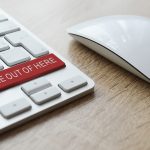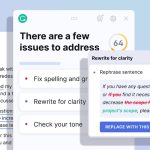Email can be both a blessing and a curse. While it has revolutionized communication, making it faster and more convenient than ever, it can also be a significant time-waster if not managed properly. This article will explore strategies to help you stop wasting time checking your email and maximize your productivity.
Understand the Impact of Email on Your Time
Recognize the Distraction
It’s important to acknowledge that constantly checking and responding to emails can be a significant distraction, eating away at valuable time that could be spent on more important tasks. This realization is the first step in developing habits to manage your email more effectively.
Assess Your Current Email Habits
Before you can make meaningful changes, it’s helpful to understand your current email habits. Track how often you check your email, how much time you spend reading and responding to messages, and how these activities impact your productivity.
Set Boundaries and Schedule Email Time
Designate Specific Times for Email
One of the most effective ways to stop wasting time checking your email is to designate specific times for this activity. Schedule two or three time slots throughout the day when you’ll devote your attention to processing your inbox. This helps prevent constant interruptions and allows you to maintain focus on other tasks.
Limit Email Notifications
Turn off email notifications on your devices to avoid the temptation to check your inbox every time a new message arrives. If necessary, set up notifications for critical emails only, but try to rely on your scheduled email times to stay on top of your messages.
Streamline Your Email Management
Use Labels and Folders
Organize your inbox by using labels or folders to categorize emails. This will make it easier to find relevant messages and keep your inbox clutter-free. You can create categories based on projects, clients, or priorities.
Implement Email Rules and Filters
Take advantage of your email client’s rules and filters to automatically sort incoming messages. This can help direct non-urgent emails to designated folders, keeping your inbox focused on high-priority items.
Optimize Your Email Reading and Response
Preview Messages Before Opening
Use your email client’s preview pane to quickly scan messages and determine their importance. This can save time by allowing you to prioritize which emails to read and respond to first.
Apply the Two-Minute Rule
If you can read and respond to an email within two minutes, do so immediately. This helps prevent messages from piling up and allows you to quickly clear items from your inbox. For more complex emails that require additional time, flag them for follow-up during a designated email time slot.
Reduce Email Volume
Unsubscribe from Unnecessary Newsletters and Notifications
Regularly review the newsletters and notifications you receive and unsubscribe from those that are no longer relevant or valuable. This will reduce the volume of incoming messages and help you focus on what’s important.
Be Selective with CC and BCC
Avoid copying or blind copying too many people on emails, as this can create unnecessary clutter in recipients’ inboxes. Be selective about who needs to be included in the conversation and only involve those who truly need the information.
Improve Your Email Communication
Write Clear and Concise Emails
When sending emails, make sure your message is clear and concise. This not only saves time for the recipient but also minimizes the likelihood of back-and-forth communication to clarify your message.
H3: Use Descriptive Subject Lines
Craft informative and descriptive subject lines that accurately reflect
the content of your email. This helps recipients quickly understand the purpose of your message and prioritize their response. Moreover, it can save time for both you and the recipient, as well-constructed subject lines reduce the need for unnecessary follow-up emails.
Evaluate Alternative Communication Channels
Consider Other Communication Methods
Before sending an email, consider whether an alternative method of communication might be more appropriate or efficient. Sometimes, a quick phone call, instant message, or face-to-face conversation can save time and provide more immediate resolution.
Adopt Collaboration Tools
Embrace collaboration tools like project management software, shared documents, or team messaging platforms to reduce reliance on email for internal communication. These tools can streamline team communication, keep everyone informed, and reduce the need for lengthy email threads.
Continuously Evaluate and Adjust Your Email Habits
Regularly Review Your Email Management Strategies
Periodically assess your email habits and management strategies to ensure they are still effective in saving you time and maintaining productivity. Be open to adjusting your approach as needed, and don’t be afraid to try new techniques or tools to improve your email efficiency.
Stay Informed About Email Productivity Tips and Tools
Keep up to date with the latest email productivity tips and tools, as new strategies and technologies are continually being developed to help manage email more efficiently. Subscribe to productivity blogs, listen to podcasts, or participate in online forums to stay informed about best practices and new innovations in email management.
In conclusion, to stop wasting time checking your email, it’s essential to understand the impact of email on your time, set boundaries, streamline your email management, optimize your reading and response, reduce email volume, improve your communication, evaluate alternative channels, and continuously assess and adjust your habits. By implementing these strategies, you’ll be able to reclaim valuable time and focus on what truly matters in your personal and professional life.





